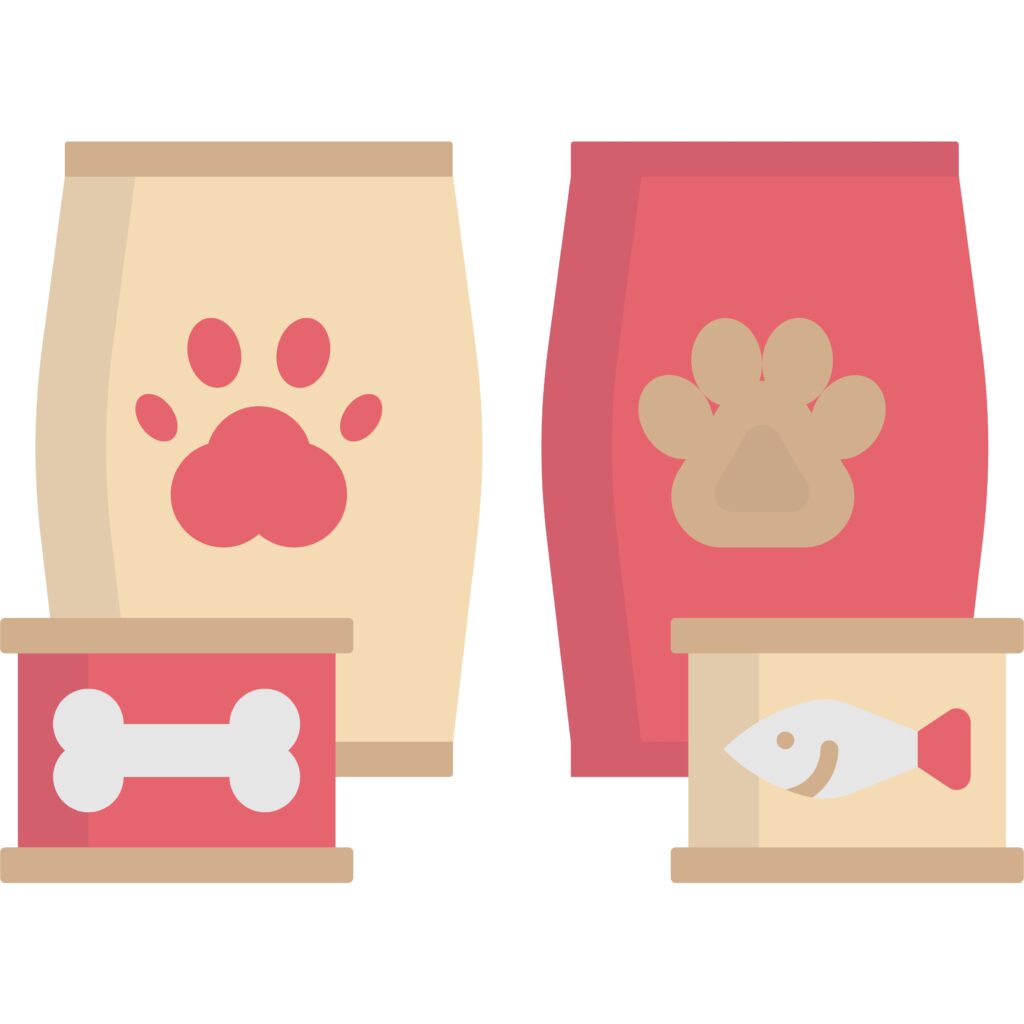A comprehensive guide to choosing the best pet food for your pets.

- Introduction to Pet Food
- What constitutes pet food?
- Importance of nutrition in pet food.
- Types of Pet Food
- Dry food
- Wet food
- Raw food
- Understanding Pet Nutrition
- Essential nutrients for pets.
- Reading pet food labels.
- Common Ingredients in Pet Food
- Meat and protein sources.
- Carbohydrates and grains.
- Fruits and vegetables.
- Choosing the Right Pet Food
- Considering pet’s age, size, and breed.
- Special dietary needs.
- Homemade vs. Commercial Pet Food
- Pros and cons of each.
- Safety concerns.
- Importance of Water in Pet’s Diet
- Hydration for pets.
- Signs of dehydration.
- Pet Food Allergies and Sensitivities
- Common allergens.
- Symptoms of food allergies.
- Transitioning Pet Food
- Gradual change process.
- Avoiding digestive upset.
- Storage and Handling of Pet Food
- Proper storage methods.
- Preventing contamination.
- Cost Considerations
- Budget-friendly options.
- Value vs. price.
- The Future of Pet Food
- Trends in pet nutrition.
- Sustainable pet food options.
- Impact of Pet Food on Health
- Dental health benefits.
- Weight management.
- Reviews and Recommendations
- Trusted brands.
- User experiences.
- Conclusion

Introduction to Pet Food
Pet food encompasses a diverse range of products designed to meet the nutritional requirements of various animals, including dogs, cats, birds, and small mammals. In recent years, there has been a growing demand for fresh pet dog food and chewy pet food options, reflecting pet owners’ desire for wholesome and nutritious meals for their furry companions. The importance of nutrition in pet food cannot be overstated, as it directly impacts a pet’s health and longevity.
Types of Pet Food
When it comes to pet food, there are several options to choose from, each offering its own unique benefits and considerations. Dry food, often referred to as kibble, is convenient and easy to store, while wet food provides additional moisture and flavor. Raw pet food has gained popularity among pet owners seeking to mimic a more natural diet for their pets, while fresh pet dog food offers the benefits of whole, minimally processed ingredients.
Understanding Pet Nutrition
Proper nutrition is essential for pets to thrive, and understanding their dietary needs is paramount for selecting the right food. Key nutrients such as protein, fats, carbohydrates, vitamins, and minerals play vital roles in supporting their overall health and well-being. Reading pet food labels can help pet owners identify the presence of these essential nutrients and ensure they are providing a balanced diet for their pets.
Common Ingredients in Pet Food
Quality pet food should contain high-quality ingredients that provide the necessary nutrients for optimal health. Meat and protein sources, such as chicken, beef, and fish, are essential for muscle development and energy. Carbohydrates and grains, such as rice and oats, provide a source of energy, while fruits and vegetables offer vitamins, minerals, and antioxidants to support immune function and overall health.
Choosing the Right Pet Food
Selecting the right pet food involves considering factors such as the pet’s age, size, breed, and any specific dietary needs or sensitivities they may have. For dogs with sensitive stomachs, choosing the best wet dog food or sensitive stomach dog food formulated for easy digestion can help alleviate gastrointestinal issues and promote better overall health. Similarly, for cats, homemade cat food or raw cat food options may offer benefits for those with specific dietary requirements.
Homemade vs. Commercial Pet Food
The debate between homemade and commercial pet food continues, with both options having their own set of pros and cons. Homemade cat food, for example, allows pet owners to have complete control over the ingredients and quality of the food, but it requires careful planning and formulation to ensure it meets all of the pet’s nutritional needs. On the other hand, commercial pet food offers convenience and is formulated to meet specific nutritional standards, but some may contain additives or preservatives that pet owners wish to avoid.
Importance of Water in Pet’s Diet
In addition to food, water is essential for maintaining hydration and supporting vital bodily functions in pets. Providing access to clean, fresh water is crucial for preventing dehydration and promoting overall health. For pet owners seeking fresh cat food options, incorporating moisture-rich ingredients or adding water to dry food can help increase water intake and support urinary tract health.
Pet Food Allergies and Sensitivities
Pets, like humans, can develop food allergies or sensitivities to certain ingredients in their diet, leading to symptoms such as itching, digestive upset, or skin irritation. Common allergens in pet food include beef, dairy, wheat, and soy. Identifying and avoiding these allergens can help alleviate symptoms and improve the pet’s quality of life.
Transitioning Pet Food
When transitioning to a new pet food, it’s essential to do so gradually to avoid digestive upset or food aversion. Slowly mixing the new food with the old food over a period of several days allows the pet’s digestive system to adjust to the new diet gradually. For pets with sensitive stomachs or food sensitivities, this gradual transition is particularly important to minimize any adverse reactions.
Storage and Handling of Pet Food
Proper storage and handling of pet food are essential for maintaining its freshness and nutritional integrity. Dry pet food should be stored in a cool, dry place, away from direct sunlight and moisture, to prevent mold growth or spoilage. Wet pet food should be refrigerated after opening and discarded if not consumed within the recommended timeframe. Additionally, pet food containers should be kept clean and sealed tightly to prevent contamination and preserve the food’s quality.
Cost Considerations
While cost is a factor for many pet owners, it’s essential to prioritize quality and nutritional value when selecting pet food. Investing in high-quality, wholesome pet food may incur a higher upfront cost, but it can contribute to the pet’s long-term health and well-being, potentially reducing veterinary bills and health-related issues down the line. Additionally, some pet owners may find that homemade or raw pet food options offer cost savings compared to premium commercial brands, especially for those with multiple pets or specific dietary requirements.
The Future of Pet Food
Advancements in pet nutrition are continuously evolving, with ongoing research and innovation driving the development of new and improved pet food products. As pet owners become increasingly health-conscious and environmentally aware, there is a growing demand for sustainable pet food options made from ethically sourced ingredients and eco-friendly packaging. Additionally, trends such as personalized nutrition plans and functional ingredients are shaping the future of pet food, offering tailored solutions to address specific health concerns and dietary needs.
Impact of Pet Food on Health
The quality of pet food directly impacts a pet’s health and well-being, with a balanced diet playing a significant role in preventing nutritional deficiencies and promoting overall vitality. Dental health benefits, weight management, and immune system support are just a few of the ways that nutritious pet food can positively impact a pet’s health and longevity. By prioritizing high-quality ingredients and selecting the best wet dog food or fresh cat food options, pet owners can help ensure their furry friends live long, happy lives.
Reviews and Recommendations
Exploring reviews and recommendations from trusted sources can help pet owners make informed decisions when selecting pet food. Websites, forums, and social media platforms provide valuable insights and user experiences that can help guide pet owners towards reputable brands and products that align with their pet’s needs and preferences. Additionally, consulting with veterinarians or pet nutritionists can provide personalized recommendations tailored to the pet’s individual health status and dietary requirements.
Conclusion
Selecting the right pet food is a critical aspect of responsible pet ownership, as it directly impacts the pet’s health, happiness, and longevity. By understanding their nutritional needs, choosing high-quality ingredients, and making informed decisions based on factors such as age, size, and dietary preferences, pet owners can ensure their furry friends receive the nourishment they need to thrive. Whether opting for fresh pet dog food, wholesome homemade cat food, or premium commercial brands, the key is to prioritize quality, nutrition, and overall well-being.
FAQs (Frequently Asked Questions)
- How do I know if my pet’s food is nutritionally balanced?
- Look for pet food labels that meet AAFCO (Association of American Feed Control Officials) standards for complete and balanced nutrition.
- Can I feed my pet homemade food instead of commercial pet food?
- While homemade diets can be an option, it’s essential to ensure they provide all the necessary nutrients in the correct proportions. Consult with a veterinarian to create a balanced homemade diet.
- What should I do if my pet shows signs of food allergies?
- If you suspect your pet has food allergies, consult with a veterinarian to identify the allergen and determine an appropriate diet plan.
- How can I encourage my pet to drink more water?
- Providing clean, fresh water in multiple locations throughout the home and using a clean bowl can encourage pets to drink more water.
- Are there any sustainable pet food options available?
- Yes, there are several sustainable pet food options available, including those made from ethically sourced ingredients and environmentally friendly packaging.

